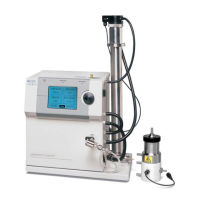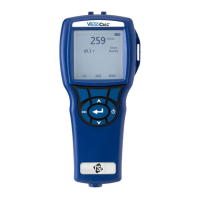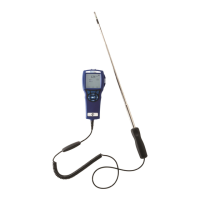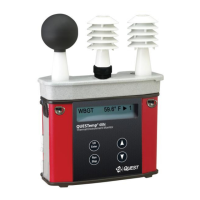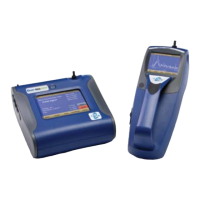B-10 Model 3936 Scanning Mobility Particle Sizer
TM
(SMPS
TM
) Spectrometer
Particle Mobility Theory
As mentioned previously, only particles with a narrow range of
electrical mobilities are extracted by the DMA to be measured by a
particle sensor. To determine the particle size associated with this
range of mobilities, the definition of particle electrical mobility must
be examined.
An aerosol particle in an electric field, E, carrying n electric charges
experiences an electrical force, causing it to move through the gas
in which it is suspended. It very quickly reaches its terminal
velocity, v. The resulting drag force on the particle is given by
Stokes law and can be equated to the electrical force to determine
the electrical mobility of a particle. The electrical mobility, then, is
a measure of the particle's ability to move in an electric field. The
electrical mobility, Z
p
, is defined by Equation B-4:
p
p
D
neC
Z
πµ
3
=
Equation B-4
where:
n = number of elementary charges on the particle
e = elementary charge (1.6 x 10
–19
Coulomb)
C = Cunningham slip correction =
1+Kn[α+β exp(-γ/Kn)]
α = 1.142, β = 0.558, γ = 0.999 (Allen & Raabe, 1985)
Kn = Knudsen Number = 2λ/D
p
λ
= gas mean free path =
+
+
TS
TS
T
T
P
P
r
r
r
r
/1
/1
λ
µ = gas viscosity (dyne • s/cm
2
) poise =
2
3
+
+
r
r
r
T
T
ST
ST
µ
D
p
= particle diameter (cm)
S = Sutherland constant [K]
T = temperature [K]
T
r
= reference temperature [K]
Note that in Equation B-4, the gas mean free path and gas viscosity
parameters are based on values for S and T. It is important to use
consistent values (that is, you may use different values for S and T
to calculate µ than to calculate λ as long as the values are
consistent for each equation). Values for common gases can be
found in Radar (1990). An explanation of the gas equations can be
found in Willeke & Baron (1993).
